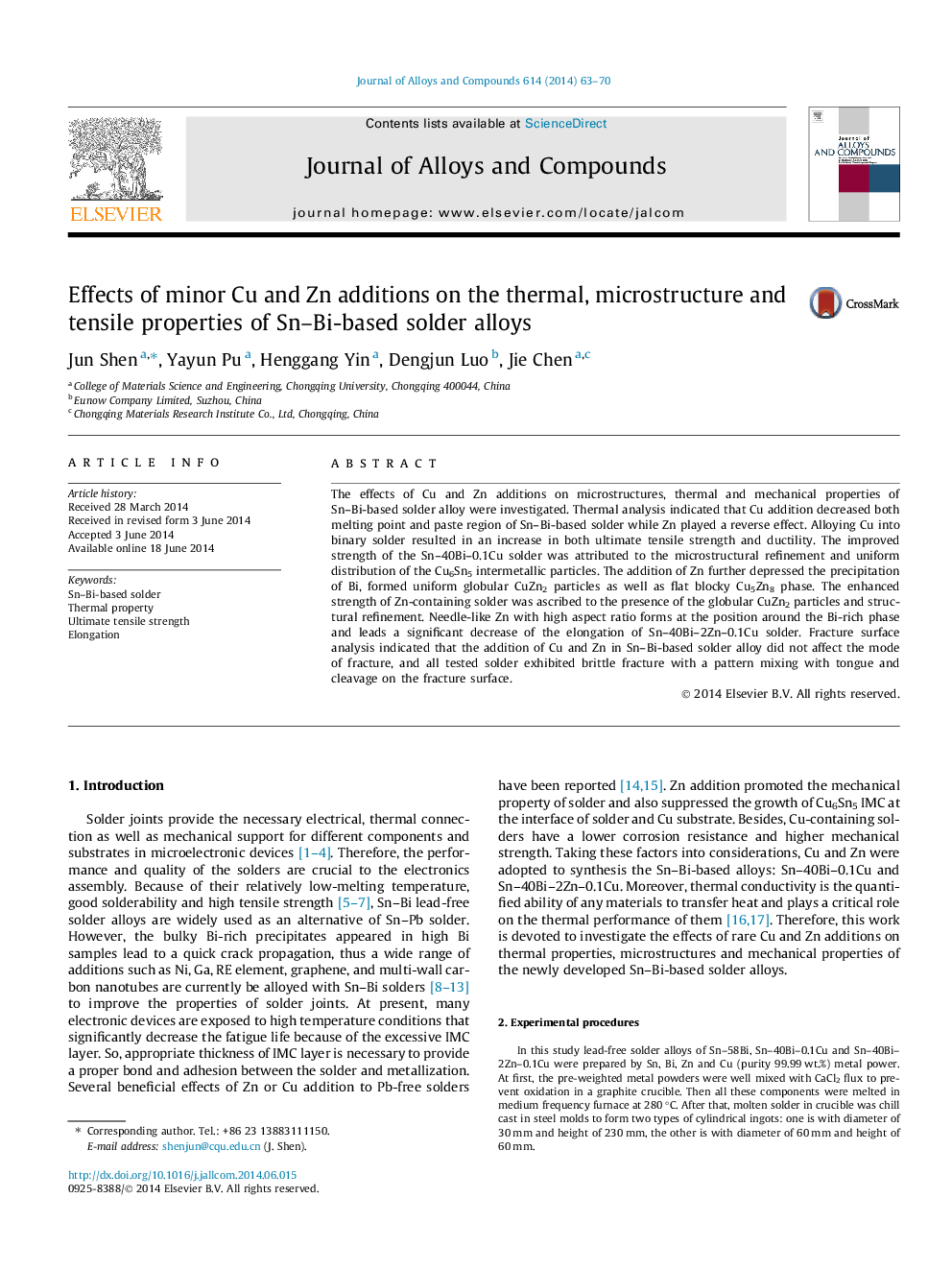| Article ID | Journal | Published Year | Pages | File Type |
|---|---|---|---|---|
| 1610535 | Journal of Alloys and Compounds | 2014 | 8 Pages |
•Two different Cu–Zn intermetallic compounds were detected in Sn–40Bi–2Zn–0.1Cu solder instead of Cu–Sn intermetallic compounds.•Both the microhardness and the ultimate tensile strength were improved with the Cu addition, and further enhanced by Zn.•The elongation decreased because of the formation of Zn-rich phase.
The effects of Cu and Zn additions on microstructures, thermal and mechanical properties of Sn–Bi-based solder alloy were investigated. Thermal analysis indicated that Cu addition decreased both melting point and paste region of Sn–Bi-based solder while Zn played a reverse effect. Alloying Cu into binary solder resulted in an increase in both ultimate tensile strength and ductility. The improved strength of the Sn–40Bi–0.1Cu solder was attributed to the microstructural refinement and uniform distribution of the Cu6Sn5 intermetallic particles. The addition of Zn further depressed the precipitation of Bi, formed uniform globular CuZn2 particles as well as flat blocky Cu5Zn8 phase. The enhanced strength of Zn-containing solder was ascribed to the presence of the globular CuZn2 particles and structural refinement. Needle-like Zn with high aspect ratio forms at the position around the Bi-rich phase and leads a significant decrease of the elongation of Sn–40Bi–2Zn–0.1Cu solder. Fracture surface analysis indicated that the addition of Cu and Zn in Sn–Bi-based solder alloy did not affect the mode of fracture, and all tested solder exhibited brittle fracture with a pattern mixing with tongue and cleavage on the fracture surface.
